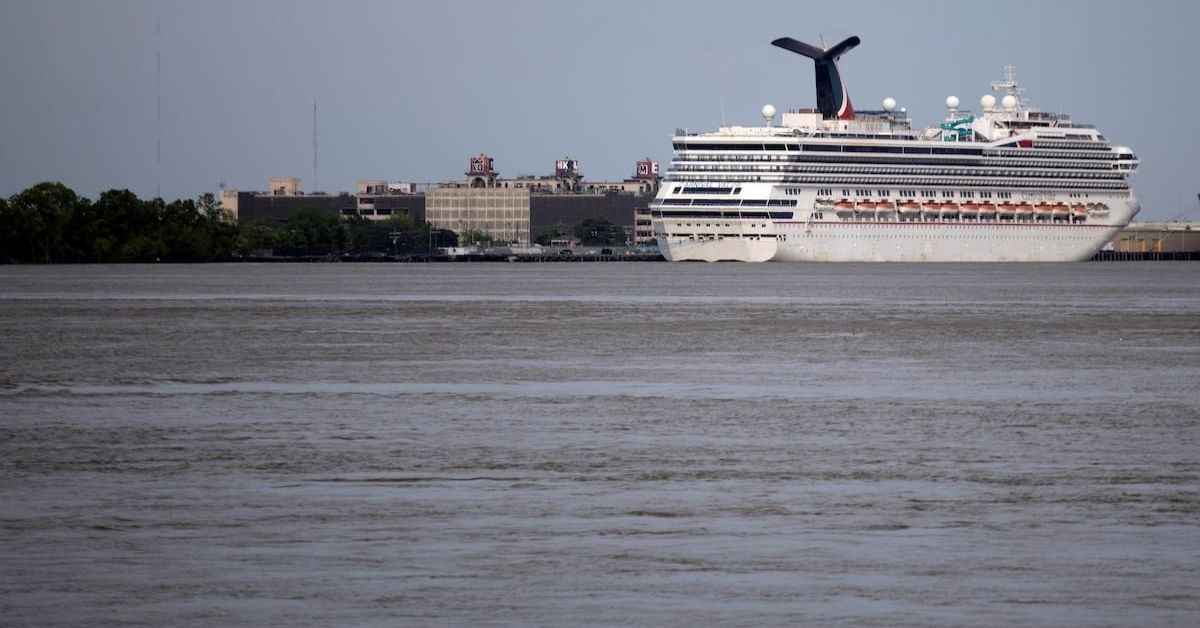Carnival Corp.’s bookings are accelerating, reflecting pent-up demand for cruising even as the industry remains essentially on hold.
In a quarterly update Wednesday, the company said booking volumes in the first quarter of 2021 were about 90% higher than in the fourth quarter of 2020. Cumulative advanced bookings for next year are ahead of 2019, which was already a particularly strong year.
“The company highlights this level of bookings was achieved with minimal advertising and marketing,” Chief Executive Officer Arnold Donald said in the release.
Pricing for 2022 is also higher than comparable pricing for 2019, Chief Financial Officer David Bernstein said in a conference call with analysts after the release.
Carnival shares rose as much as 7.1% to $30.63 in New York trading, before later paring gains somewhat.
The company’s bonds were among the best performers in the high-yield market Wednesday, with the 7.625% notes due 2026 rising to 110.5 cents on the dollar, the highest since Carnival issued them in November. The cost to protect Carnival’s debt against default for five years dropped under 308 basis points, the lowest since March 2020.
Tensions have been mounting between cruise lines and the U.S. government, as the industry remains on hold in its biggest market. The Centers for Disease Control and Prevention lifted its ban on cruising in October but replaced it with a phased approach to safely returning to the seas, and no line has won full CDC approval to get back to sailing.
‘Very Disappointed’
Donald joined others in the cruise industry Wednesday in saying that the cruise industry should be treated more like other tourism businesses, noting he was “very disappointed” in the CDC’s latest guidance, which asks cruise companies to implement routine testing of crew and strike deals with ports on how to deal with Covid-19 emergencies, among other things.
The industry has said the CDC is dragging its feet on the process.
Still, some of Carnival’s brands are already planning cruises in the Canary Islands, Italy, the U.K. and Greece. Speaking on the conference call, Donald said he remained hopeful that U.S. sailings could begin in the summer and the whole fleet could be running by late 2021 or early 2022.
“We’d like to be able to have the fleet fully going by the end of this year, early next year, and that’s our aspiration,” he said.
He also highlighted that 59 vessels in the 90-ship fleet were abroad and not necessary hamstrung by the CDC policy.
The Miami-based company also reported an adjusted net loss of $1.95 billion for the first quarter, wider than analysts’ expectation of $1.74 billion.
Enough Liquidity
Bernstein said Carnival has enough liquidity to return to full operations and the company will be pursuing refinancing opportunities to reduce interest expense and extend maturities.
Carnival has tapped the corporate bond market five times in the pandemic, most recently borrowing $3.5 billion in February to refinance a debt pile that has swelled throughout the Covid-19 outbreak. Its prior four offerings have been for general corporate purposes, padding the balance sheet to boost liquidity that now stands at $11.5 billion in cash and short-term investments.
The cruise giant is looking to refinance debt as credit markets broadly have rallied over the past year, thanks to the Federal Reserve and fiscal stimulus. When Carnival first sold bonds in the pandemic last April — as an investment-grade company, at the time — it paid investors 11.5% interest on debt secured by first-priority claim assets like its vessels and intellectual property. Two months ago, it was able to cut its borrowing costs in half without offering any collateral.
Carnival has been a high-yield company since June, when S&P Global Ratings joined Moody’s Investors Service in removing its investment-grade ratings. Moody’s said in February that it might cut the company further, focusing on the timeline for Carnival to return to service.
Source : G Captain







